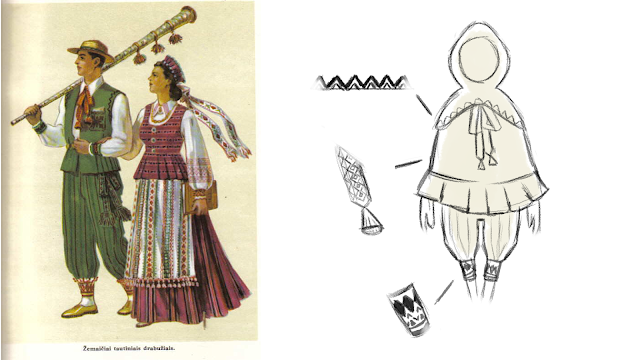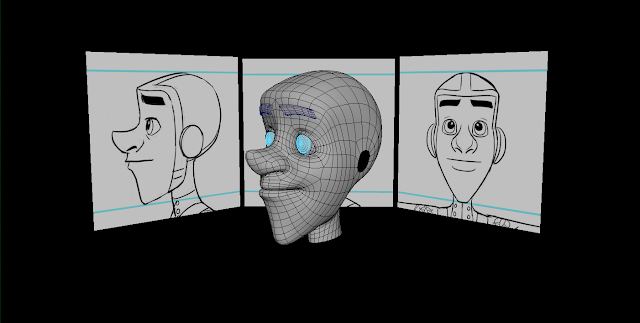Wednesday 28 March 2018
Monday 26 March 2018
Friday 23 March 2018
Toolkit 2 | Second Year Term 2 Submission
Life Drawing:
Life drawings #1
Life drawings #2
Life drawings #3
Life drawings #4
Life drawings #5
Life drawings #6
Life drawings #7
Life drawings #8
Life drawings #9
Life drawings #10
Life drawings #11
Life drawings #12
Life drawings #13
Life drawings #14
Life drawings #15
Character Design:
Character Design Class #1
Character Design Class #2
Character Design Class #3
Character Design Class #4
Character Design Class #5
Character Design Class #6
Character Design Class #7
Character Design Class #8
Character Design Class #9
Character Design Bible | Submission
Mudbox:
Mudbox Class #1
Mudbox Class #2 | Fruit Bowl
Mudbox Class #3 | Mug
Sculpting:
Sculpting class | Character Head
Sculpting class #1 | Preparation
Sculpting class #2 | Rough Blocking
Pipeline 1: Head Modelling:
1) Preparation
2) Rough Blocking (Part 2 -3)
3) The Mouth
4) The Eye
5) The Nose
6) The Brow
7) The Ear & Neck
8) Sculpting & Clean Up
9) Creating Detailed Eyes
10) Adding a Throat
11) Eyebrows
12) Skull Cap
13) Snagging List
Pipeline 1: Body Modelling:
1) Torso Blocking
2) Torso & Arms
3) Legs & Pelvis
Lighting & Rendering 2:
1) Sampling & Noise Reduction
2) Ray Depth
3) Maya Lights
4) Light Filters
5) Stylised Internal Lighting
6) HDR Images
7) Sky Dome Light
8) Stylised External Lighting
9) Standard Surface Shader
10) Toon Shader
11) Geometry Override Sets
12) Physical Sky Light
13) Mesh Lights
14) Ambient Occlusion
15) Photometric Lights
16) Depth of Field
17) Sub Surface Scattering
18) Stand Ins (Proxies)
3D Animation:
Weight lifting (Part 1)
Weight lifting (Part 2)
Facial Animation
Phoneme Library
In Class Activities:
5 Action Poses
5 Expression Poses
Standard Surface
Infographics:
Infographics Class #1 | Influence Maps
Infographics Class #2
Infographics Class #3 | Credit Storyboard
Infographics | Submission
Acting:
Acting Class #1
Life drawings #1
Life drawings #2
Life drawings #3
Life drawings #4
Life drawings #5
Life drawings #6
Life drawings #7
Life drawings #8
Life drawings #9
Life drawings #10
Life drawings #11
Life drawings #12
Life drawings #13
Life drawings #14
Life drawings #15
Character Design:
Character Design Class #1
Character Design Class #2
Character Design Class #3
Character Design Class #4
Character Design Class #5
Character Design Class #6
Character Design Class #7
Character Design Class #8
Character Design Class #9
Character Design Bible | Submission
Mudbox:
Mudbox Class #1
Mudbox Class #2 | Fruit Bowl
Mudbox Class #3 | Mug
Sculpting:
Sculpting class | Character Head
Sculpting class #1 | Preparation
Sculpting class #2 | Rough Blocking
Pipeline 1: Head Modelling:
1) Preparation
2) Rough Blocking (Part 2 -3)
3) The Mouth
4) The Eye
5) The Nose
6) The Brow
7) The Ear & Neck
8) Sculpting & Clean Up
9) Creating Detailed Eyes
10) Adding a Throat
11) Eyebrows
12) Skull Cap
13) Snagging List
Pipeline 1: Body Modelling:
1) Torso Blocking
2) Torso & Arms
3) Legs & Pelvis
Lighting & Rendering 2:
1) Sampling & Noise Reduction
2) Ray Depth
3) Maya Lights
4) Light Filters
5) Stylised Internal Lighting
6) HDR Images
7) Sky Dome Light
8) Stylised External Lighting
9) Standard Surface Shader
10) Toon Shader
11) Geometry Override Sets
12) Physical Sky Light
13) Mesh Lights
14) Ambient Occlusion
15) Photometric Lights
16) Depth of Field
17) Sub Surface Scattering
18) Stand Ins (Proxies)
3D Animation:
Weight lifting (Part 1)
Weight lifting (Part 2)
Facial Animation
Phoneme Library
In Class Activities:
5 Action Poses
5 Expression Poses
Standard Surface
Infographics:
Infographics Class #1 | Influence Maps
Infographics Class #2
Infographics Class #3 | Credit Storyboard
Infographics | Submission
Acting:
Acting Class #1
Thursday 22 March 2018
Maya #38 - 3D Animation | Phoneme Library
In today's Maya class we did the Phonemy Library where we created different facial expressions for either emotions or pronouncing different syllables. The settings for the faces were then stored in a recent installed plug-in called tweenMachine. Next up we will be doing Jawbouncing for a given dialogue.
Tuesday 20 March 2018
Sculpting class #2 | Rough Blocking
As for today's class we roughly shaped our desired head and already inserted the eyes. However, I did a mistake placing the eyes as they are a little bit too far apart. I will be fixing this mistake during the next class.
Sculpting class #1 | Preparation
As for the first sculpting class we prepared the stand for the next few classes where we will be modelling our chosen head model.
Friday 16 March 2018
Thursday 15 March 2018
Premise | Sketches #3
After revisiting my last sketches I decided to combine some of the character features, adding some traditional Lithuanian ornaments and came up with some new, improved and final ideas. I personally like number 3 for the male and 5 for the female character the most. My next step will be the further development of the final characters into turnarounds with fitting colourization.
As for my environment development I will be mainly focusing on areas surrounding mountains. The importance of the colour pick especially for the aurora lights should not be underestimated since they will determine and lead the mood and the atmosphere immensely. The following sketches are experiments for determining the harmony between the colours for the environment.
As for my environment development I will be mainly focusing on areas surrounding mountains. The importance of the colour pick especially for the aurora lights should not be underestimated since they will determine and lead the mood and the atmosphere immensely. The following sketches are experiments for determining the harmony between the colours for the environment.
Tuesday 13 March 2018
Friday 9 March 2018
Premise | Sketches #2
Continuation of character development.
After a while I noticed that my characters feel too plain, so I had to
give it a try to give more authenticity to my character robes. As for so
to personalize them more I added traditional Lithuanian ornaments and accessories. Each and every single ornament have different meaning.
Thursday 8 March 2018
Wednesday 7 March 2018
Tuesday 6 March 2018
Monday 5 March 2018
Sunday 4 March 2018
"Ethel & Ernest" (2016)
 |
| Fig. 1 “Ethel and Ernest“ Poster. |
Based on Ramond Briggs‘ graphic novel with the same name “Ethel and Ernest“ telling the story of his parents Ethel and Ernest, an ordinary couple from London, experiencing some of the major events of the 20th century including the World War Two. Approaching the topic of war “Ethel and Ernest“ turns quickly, but smoothly from the ordinary daily life where Ernest delivers dairy while swinging and singing along his way to a life filled with fear, disappointment, hope and loss where they are forced to send their son Ramond away with a heavy heart due to fear of potential air attacks and building metal cages to sleep in as well as a bunker in their tiny garden.
 |
| Fig. 2 The bunker. |
Writer of the story is Ramond Briggs an English illustrator, cartoonist, graphic novelist and author who is best known in Britain for his book “The Snowman“ published in 1978. He won the 1966 and 1973 Kate Greenaway Medals from the British Library Association including the Horn Book Award from 1979 and the British Book Award in 1993 and 1999. Initially “Ethel and Ernest“ should have been produced by English film producer John Coates who also produced the animation based on another of Briggs‘ books “The Snowman“. However, after he passed away in 2012 Camilla Deakin and Ruth Fielding from Lupus Films were hired to finish the project. The film was directed by Roger Mainwood who worked as an animator on a raft of Briggs‘ film and TV adaptations. Reason for him to be the director and not any other is obviously because of the personal relationship between him and Briggs as he states in an interview: “I think that knowing [Briggs] over the years has helped tremendously. We have built up a personal relationship with him and a level of trust.“ (Joseph Walsh, 2016) The animation was eventually brought together by the companies: Lupus Films, Ethel & Ernest Productions, BFI and Cloth Cat Animation just to name a few.
 |
| Fig 3. Family at breakfast. |
The comic-like look of the animation is due to the fact that everything is hand-drawn. For every second of animation material 12 drawings were required ending up with around 65.000 hand drawn scenes for the entire movie not mentioning the various of hundreds of different model sheets. “Over 100 animators worked on the film, drawing almost every individual frame by hand. Roughly 12 drawings are required for every second of film, which works out at 61,200 drawings.“ (James Gill, 2016) However, unlike “The Snowman“ or “Father Christmas“, “Ethel and Ernest“ are drawn in a computer program called TVPaint making it the first Briggs adaptation to be made digitally. The comic-like, soft and appealing visual of the animation welcoms the audience with open arms soothing their minds when addressing the topics of war making it somewhat suitable for children as well. With the soft and soothing visuals one would definetly not assume somthing dark happening in the animation, however, one cannot disagree when Bradshaw states: “It’s an engaging film, but it leaves you with a feeling that there might be a deeper, darker, more specific story yet to be told.“ (Peter Bradshaw, 2016)
Amazed by the animation himself Raymond Briggs confesses on RadioTimes: “I spent two days in tears. It was just as if they were behind me in the room, saying all the things they used to say.” (RadioTimes, 2016) The admiration continues as the public rates the animation with a very high score ranging from 72% on Metacritic to 97% on RottenTomatoes. The film won awards including the “Jury Award“ at the “Anima Mundi Animation Festival“ for the “Best Animated Feature“ and the “Best Feature Film“ and the “Audience Award“ at “Cinanima 2017“ in Portugal with many other awards to come.
Bibliography:
Walsh, J. (2016). Ethel & Ernest: ‘It‘s a history of the 20th century, seen through the eyes of an ordinary family‘. (online) Available at: http://www.bfi.org.uk/news-opinion/news-bfi/interviews/ethel-ernest-raymond-briggs-animated (Accessed on 03/03/2018)
Gill, J. (2016). Behind the scenes of Ethel & Ernest. (online) Available at: http://www.radiotimes.com/news/2016-12-28/behind-the-scenes-of-ethel-ernest/ (Accessed on 03/03/2018)
Bradshaw, P. (2016). Ethel & Ernest review – moving adaptation of Raymond Briggs‘s graphic novel. (online) Available at: https://www.theguardian.com/film/2016/oct/27/ethel-ernest-review-moving-adaptation-of-raymond-briggss-graphic-novel (Accessed on 03/03/2018)
Illustration List:
Fig 1. “Ethel and Ernest“ poster. At: https://i.jeded.com/i/ethel-and-ernest.62787.jpg (Accessed on 03/03/2018)
Fig 2. The bunker. At: https://pbs.twimg.com/media/DRgitiMX4AAB7SI.jpg (Accessed on 03/03/2018)
Fig 3. Family at breakfast. At: https://static.standard.co.uk/s3fs-public/thumbnails/image/2016/10/28/10/ernest-ethel.jpg?w968h681 (Accessed on 03/03/2018)
Saturday 3 March 2018
Subscribe to:
Posts (Atom)
















































